Vipava + Štanjel – The naked man who gave us pears as a gift
26. August 2025
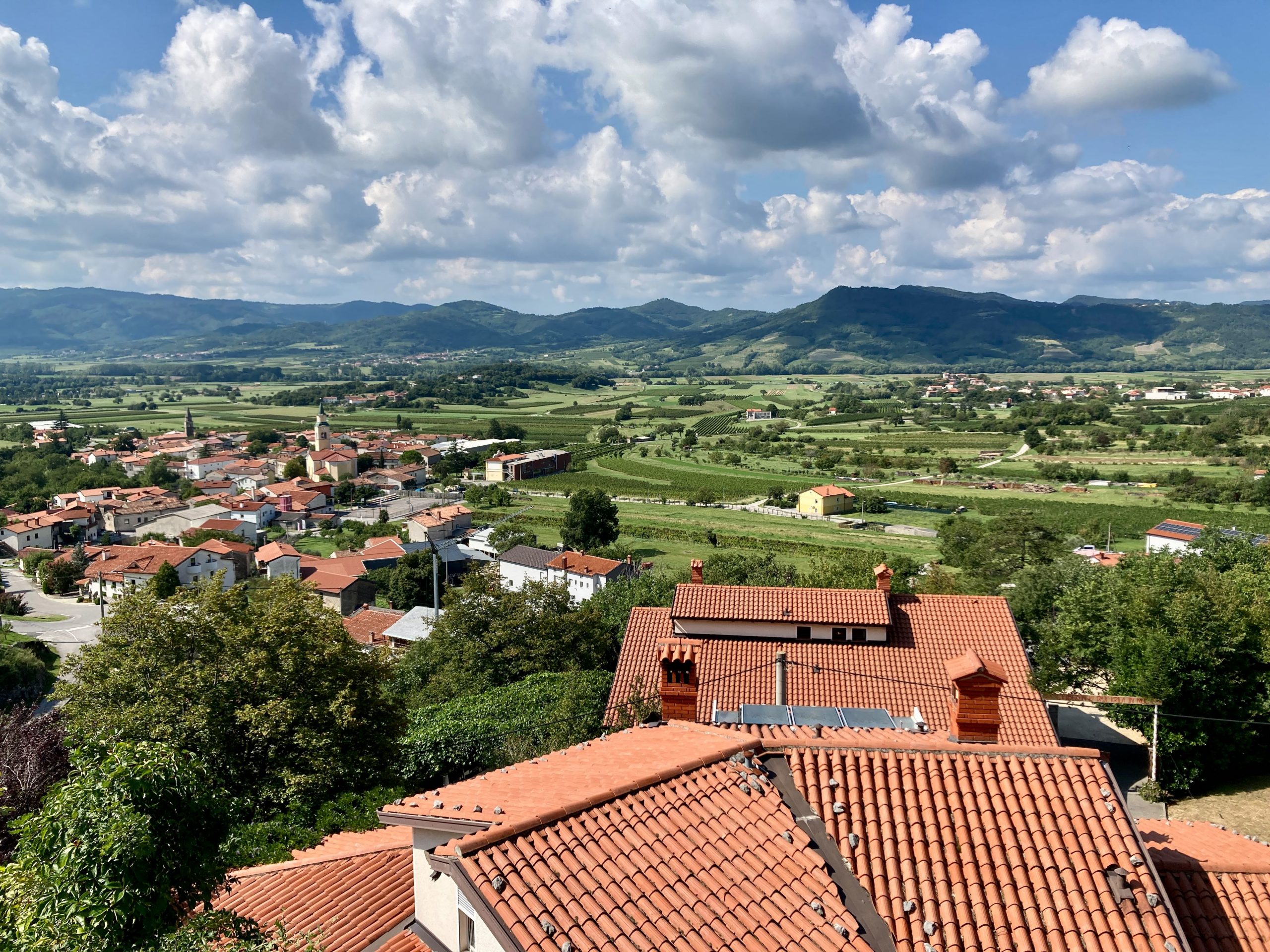
Our next destination was Štanjel, a very special place. On the way, we stopped in Vipava. The area has quite a bit of history. In the year 394, the Eastern Roman ruler (Theodosius) and the Western Roman ruler (Eugenius) were at war. Theodosius attacked Eugenius’s army but was defeated. The very next day, they attacked again and this time emerged victorious. Theodosius had spent the night praying and weeping. When they launched their second attack, a solar eclipse suddenly appeared in the sky, and the notorious Bora wind began to howl. Eugenius’s troops thought that Theodosius had just received full support from God and fled at once. That’s how it was presented in a small museum in Vipava. Wikipedia tells the story a bit differently. But the locals seem to like the version with the wind and God. The Bora wind usually blows in winter and is among the fiercest winds in the world, reaching speeds of 100–250 km/h.
We began our walk through Vipava in completely windless and warm weather, and at first we thought the place was almost deserted. No one was in sight. Only a street sweeper was making his rounds.
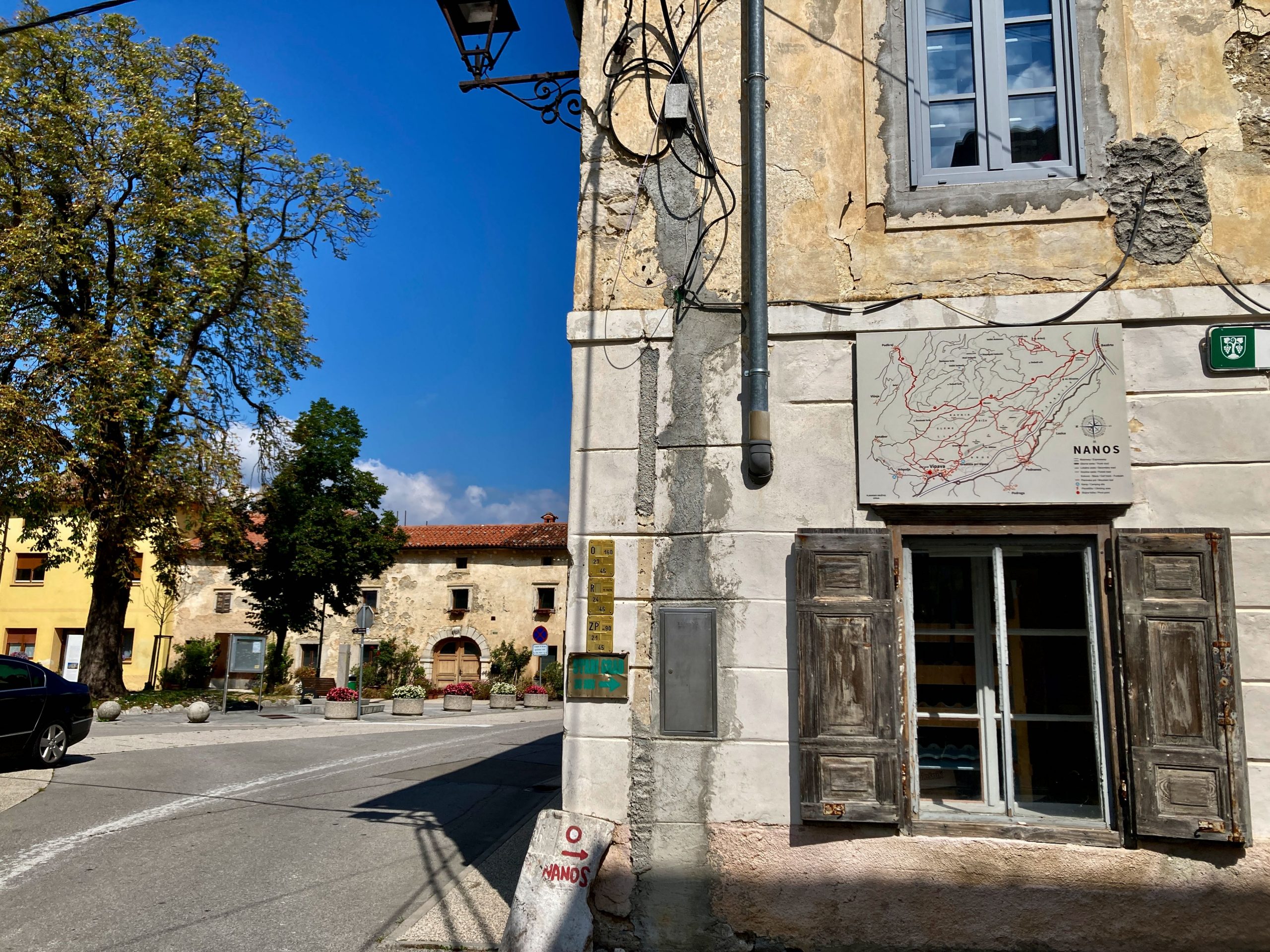 1
1
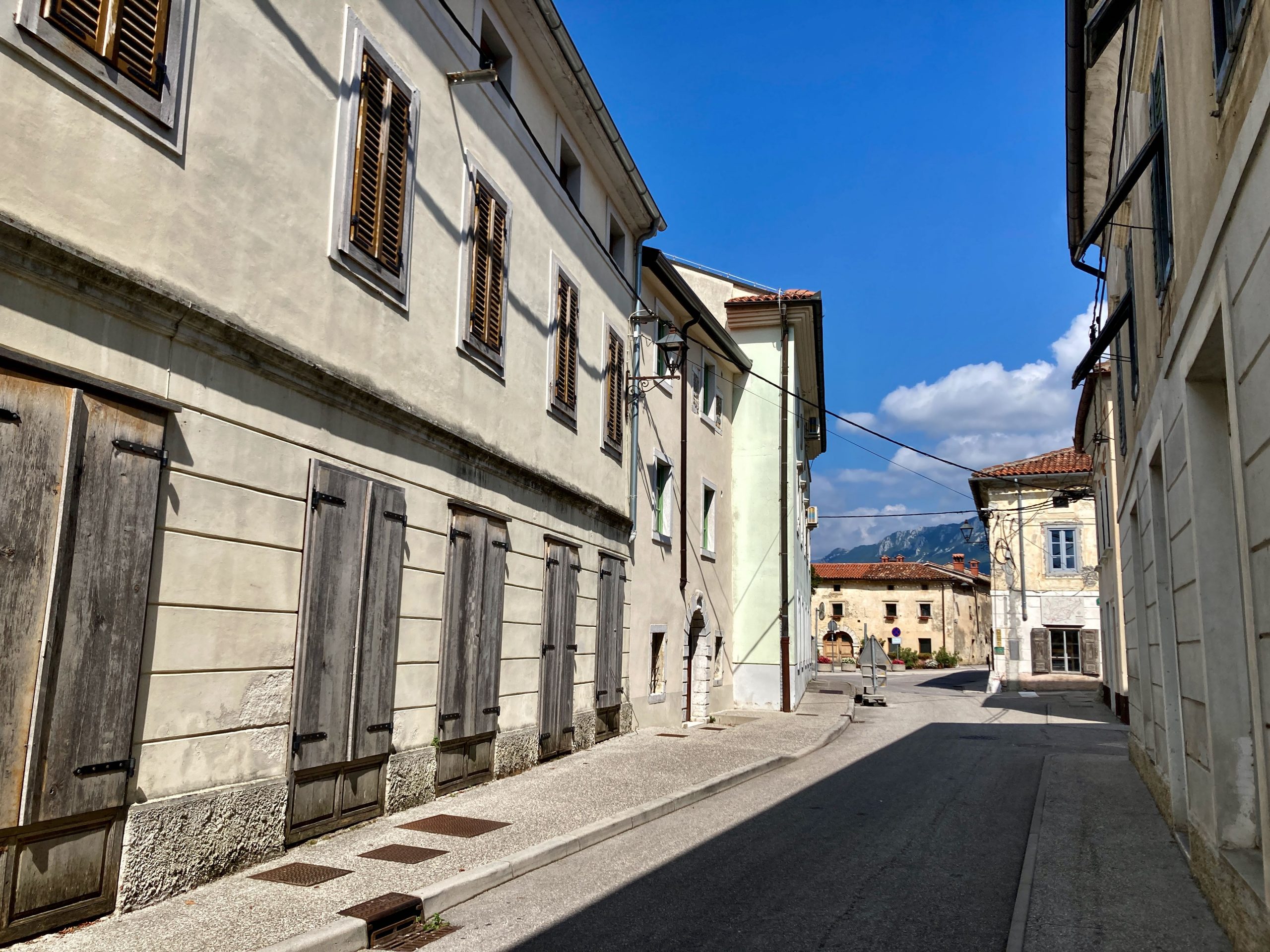 2
2
Then we came to a sort of tourist information center. There was plenty of wine for sale (this is a wine region and the wine is said to be quite good, but people prefer to drink it themselves, so hardly any is exported), a small historical exhibition, and a friendly young man who wanted to help us in German. However, even he was at a loss as to where one could have a good lunch around here. Everything was closed. Only a bar was open, offering toast.
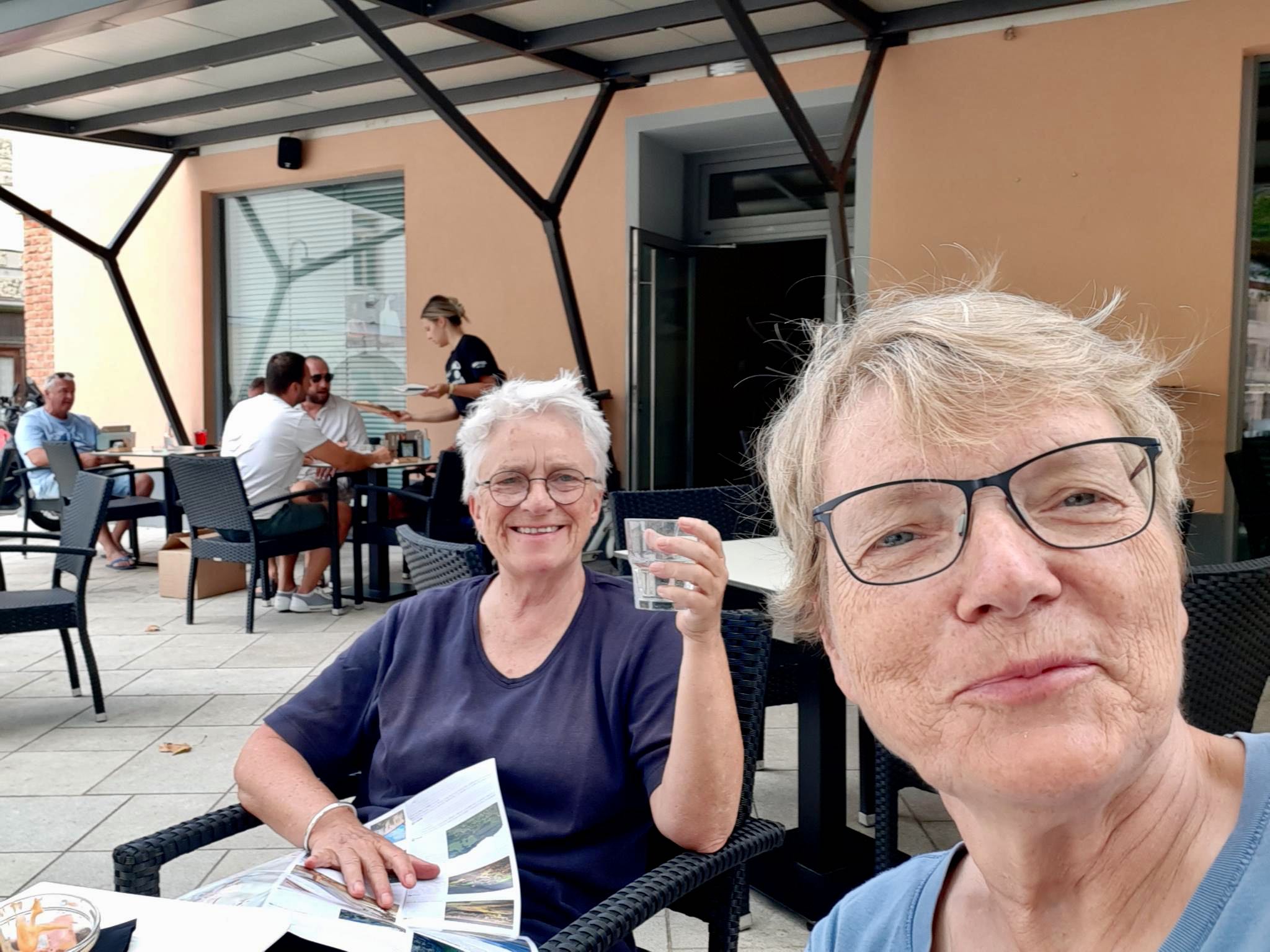 3
3
Here, however, our hopeful expectations of lower prices were finally met – it was really inexpensive, and the toast and espresso were delicious.
On our stroll, we also noticed that window sills were often decorated, there was a thrift shop, and you could even have your photo taken as a bunch of grapes. There was also a pretty bridge.
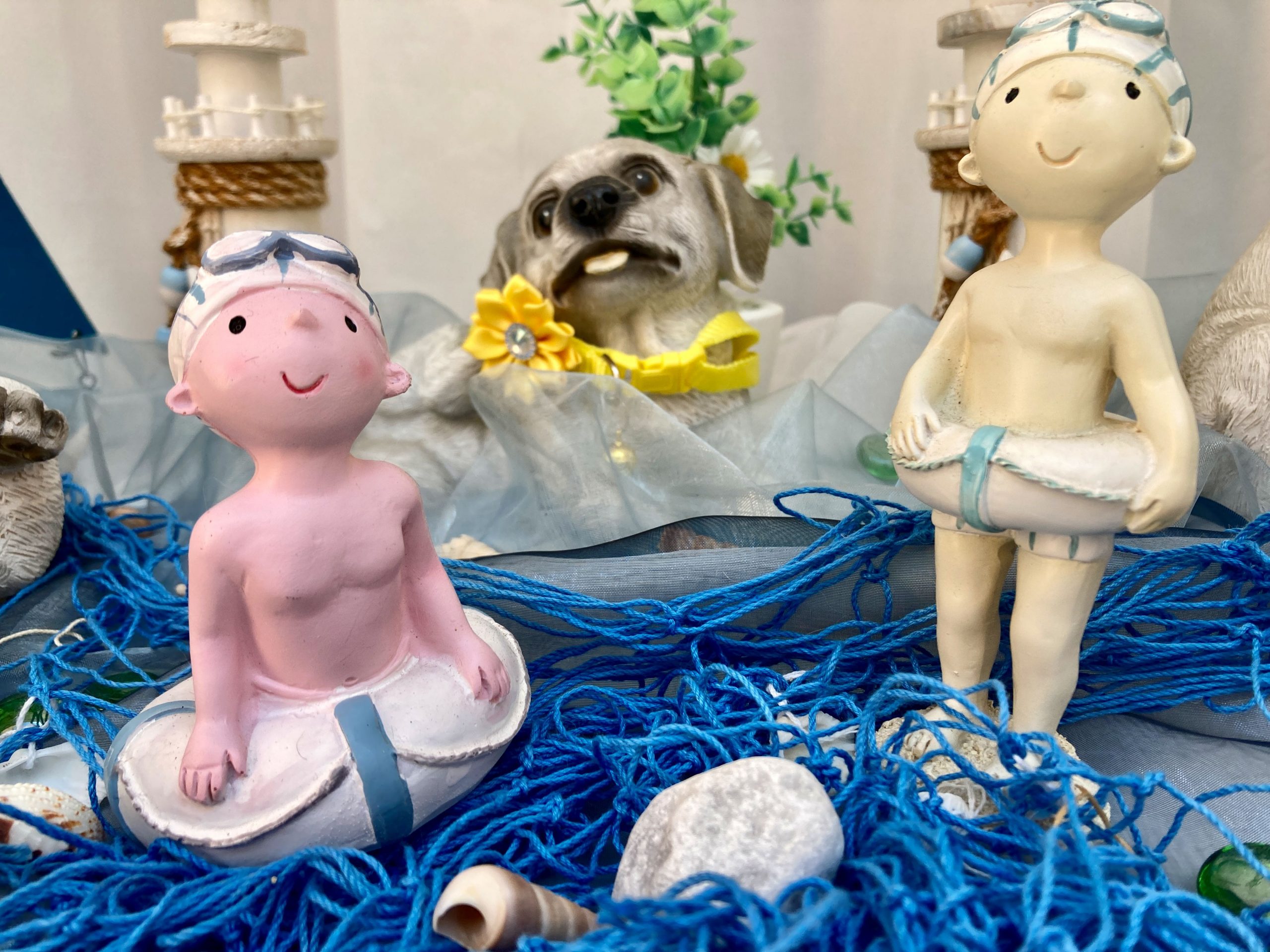 4
4
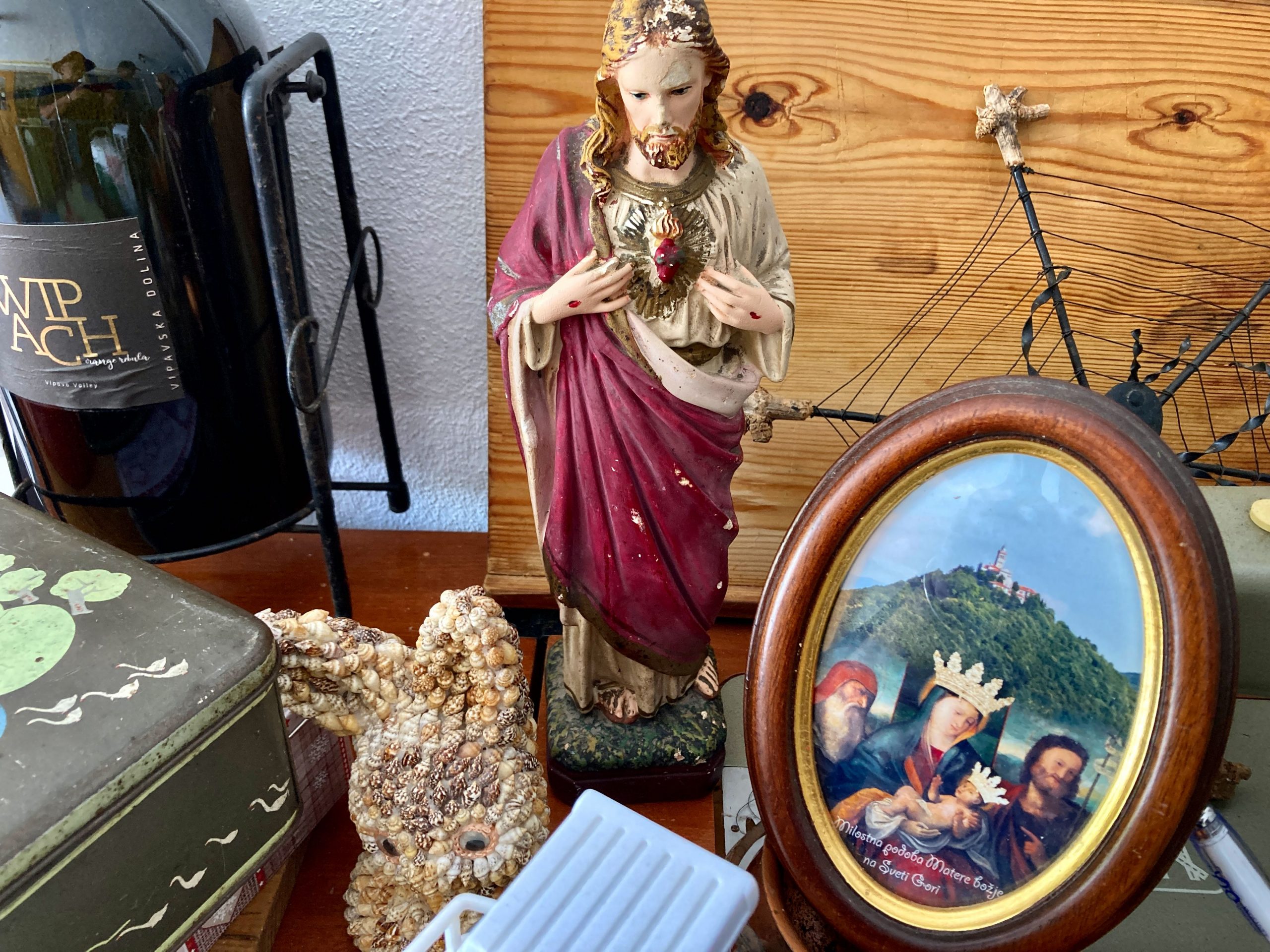 5
5
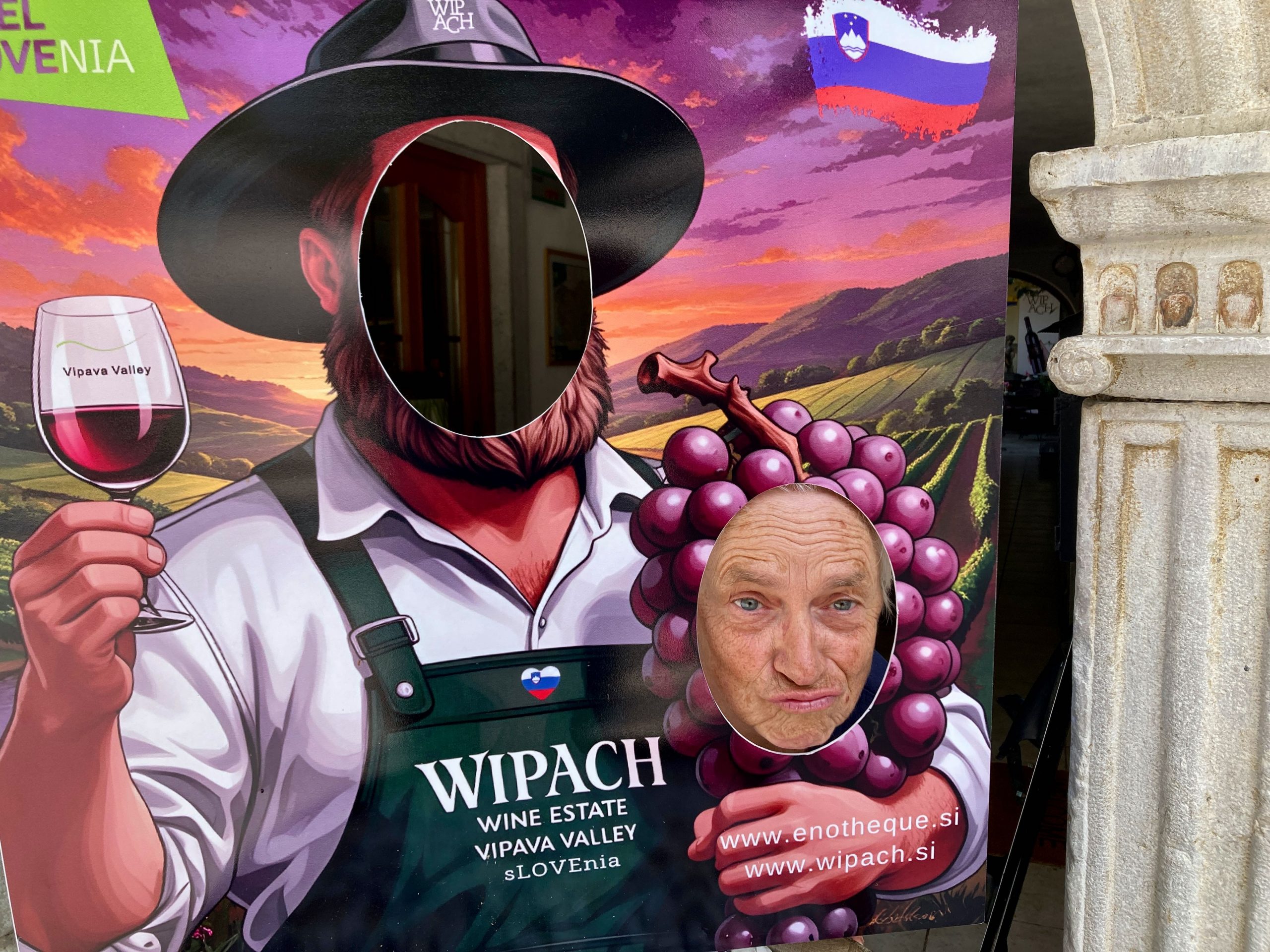 6
6
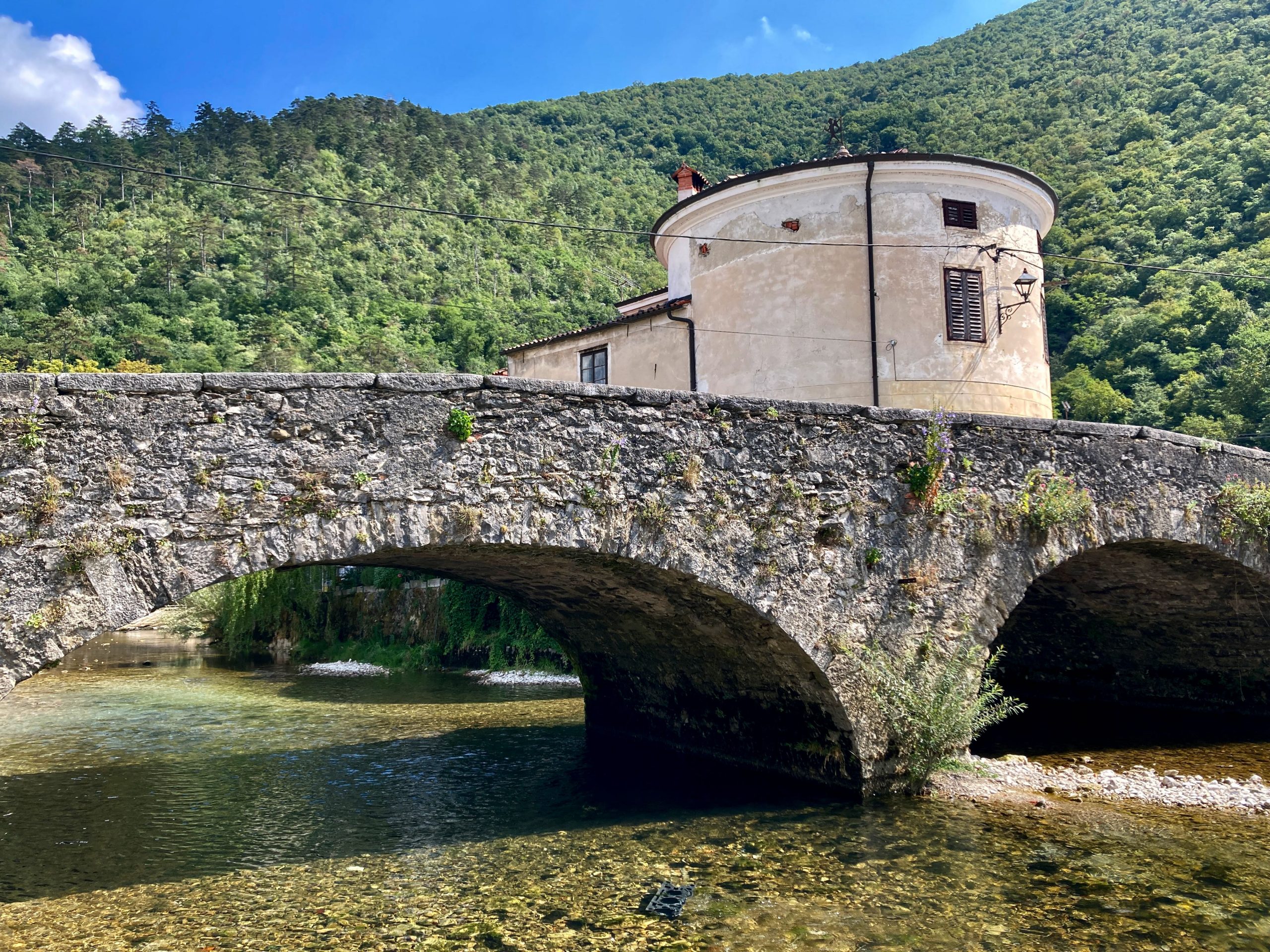 7
7
Between 1922 and 1943, the fascist Italians enforced a harsh policy of Italianization here, which the locals did not appreciate, and many became resistance fighters. During World War II, this was an important center of the Yugoslav resistance. In 1945, the town was finally liberated and became part of Yugoslavia.
We also paid a visit to the local cemetery. Here, two (out of only four in all of Europe) 4,500-year-old ancient Egyptian sarcophagi can be seen. They were sent here in 1845 by the Austrian honorary consul so that his family members could be laid to rest in them.
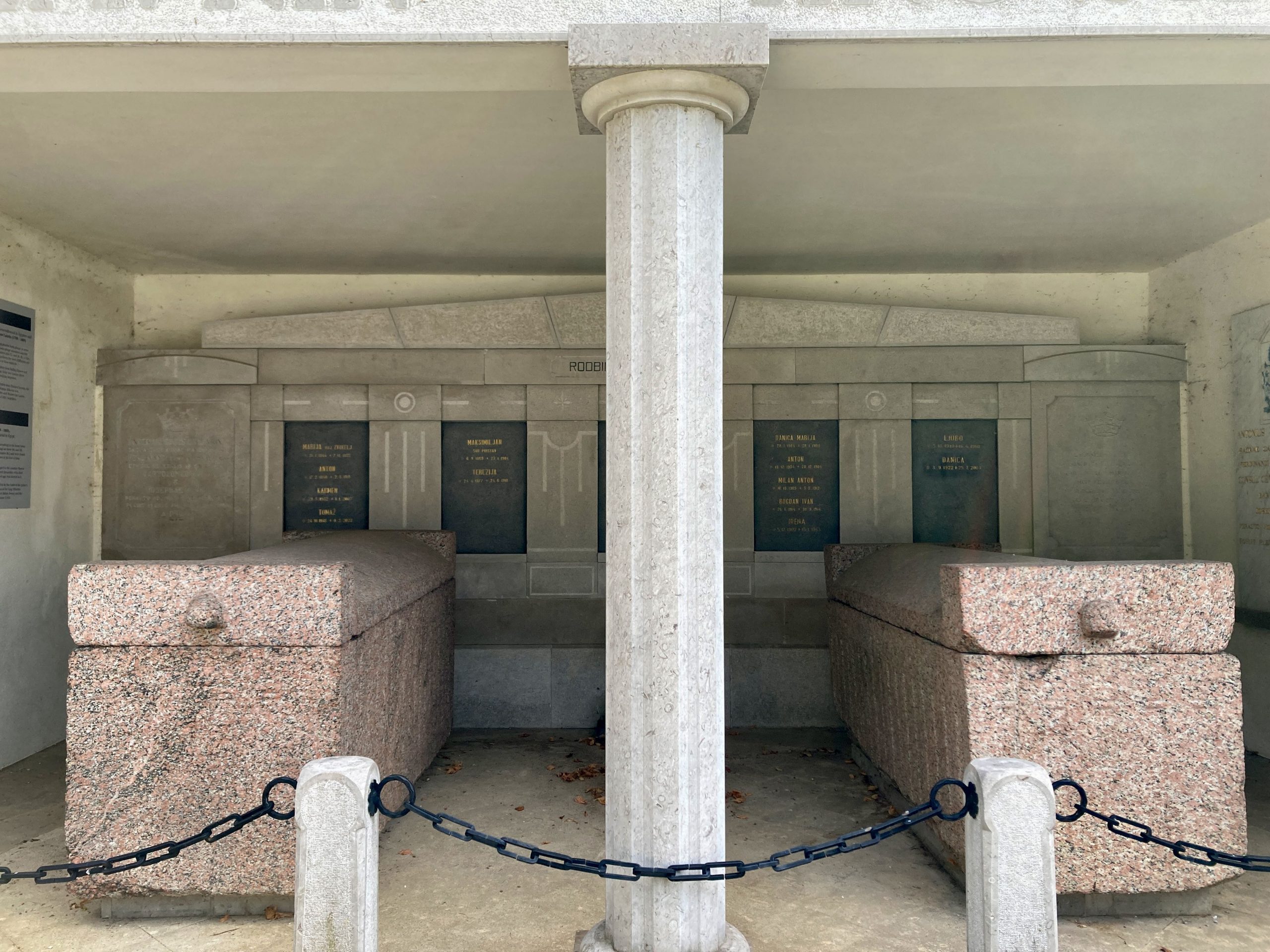 Sarkophagi
Sarkophagi
Apart from that, the cemetery was rather unattractive. Located right next to the main road, grave stood next to grave, all extremely neat and, to my eyes, quite ugly. And despite the confusing history of conquerors and so on, we saw only Slovenian-sounding names.
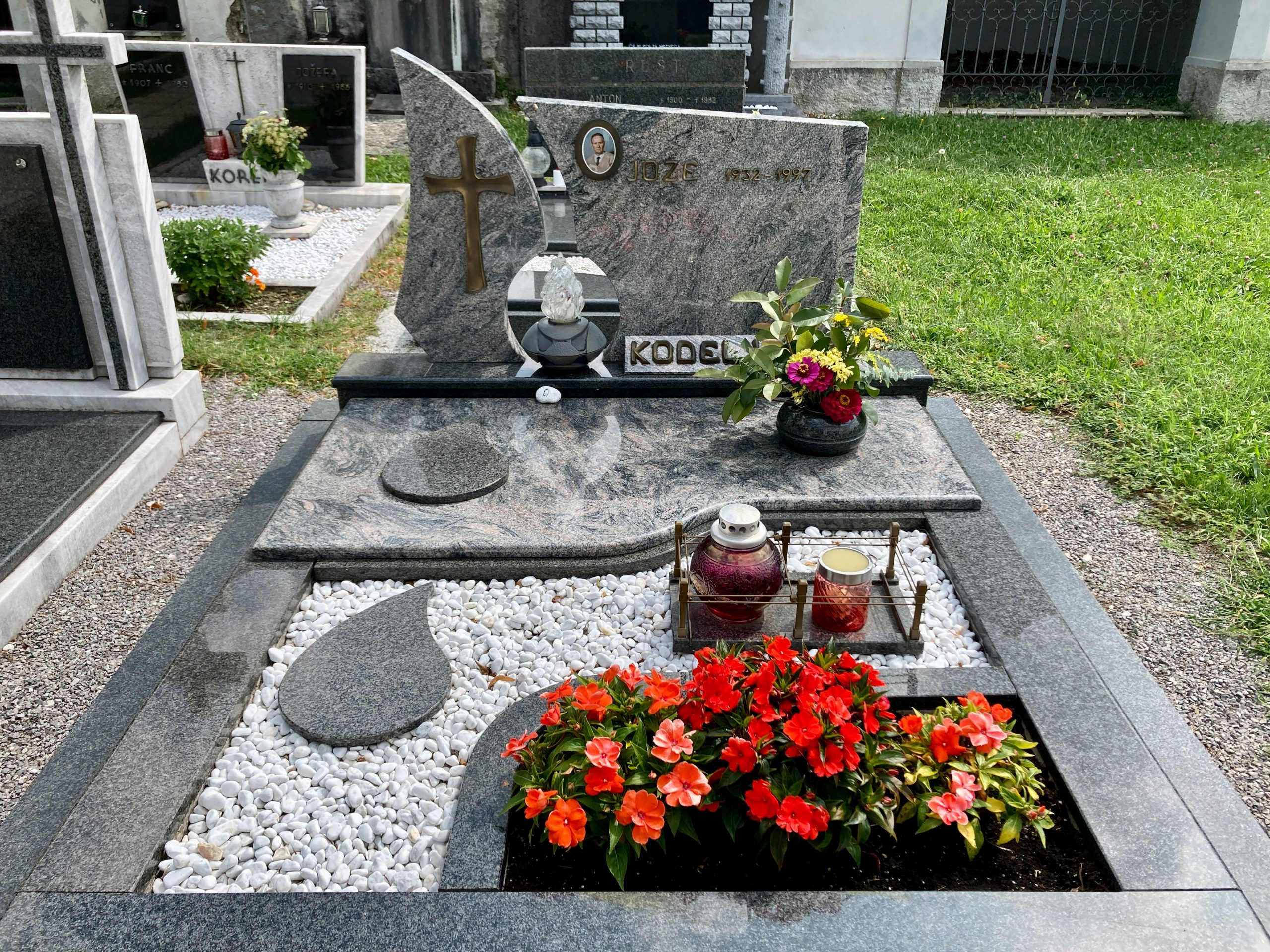 8
8
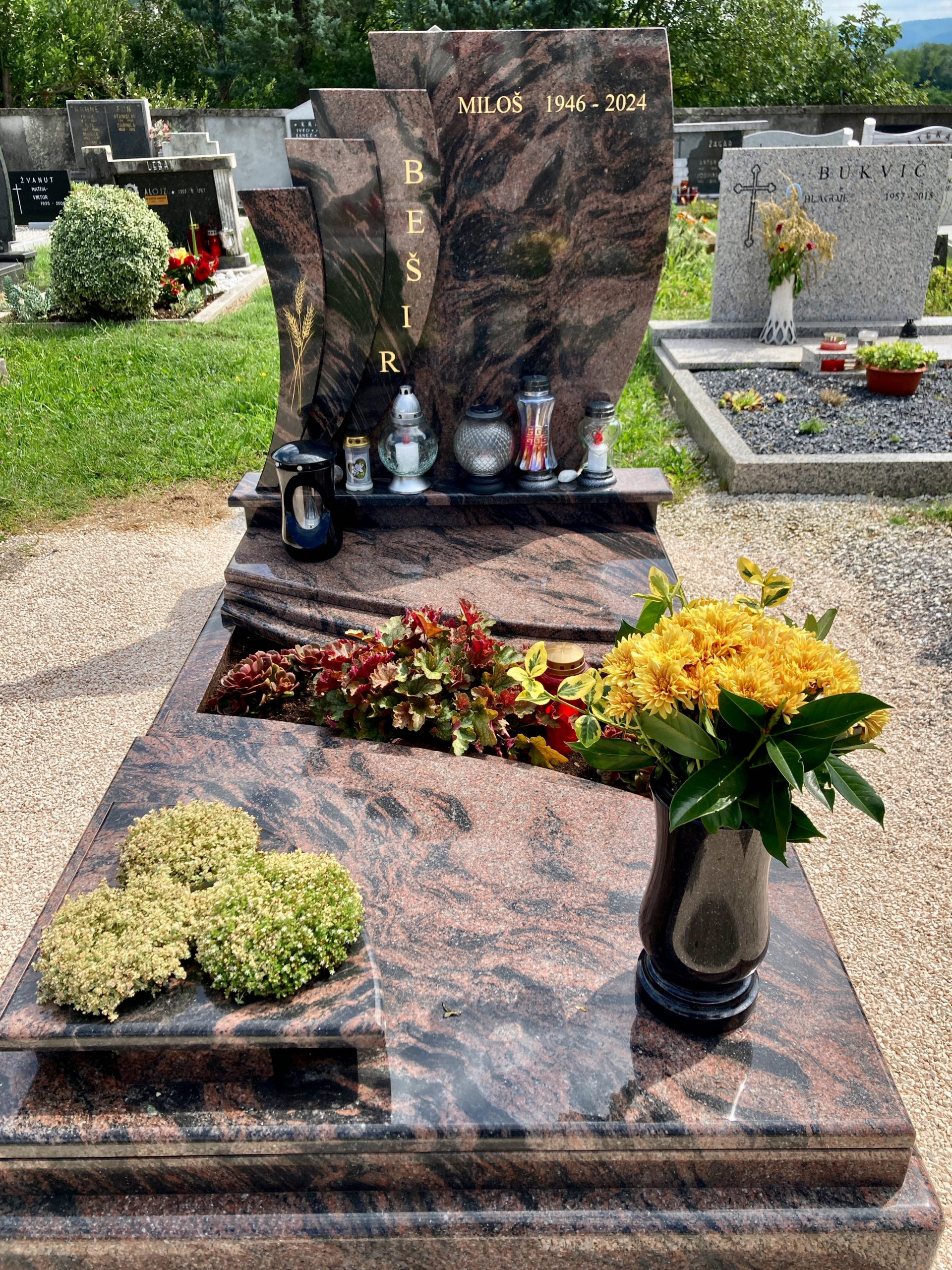 9
9
After that, we continued on to our destination, Štanjel. Štanjel is a kind of fortress on a hill, surrounded by various old houses. You park your car outside, and at the top, it’s almost a pedestrian zone—except that locals are allowed to drive up. There aren’t very many of them, though. Only 38 people live here permanently. There are two accommodations for travelers, a large restaurant by the fortress, a small bar with a view, and quite a few day-trippers.
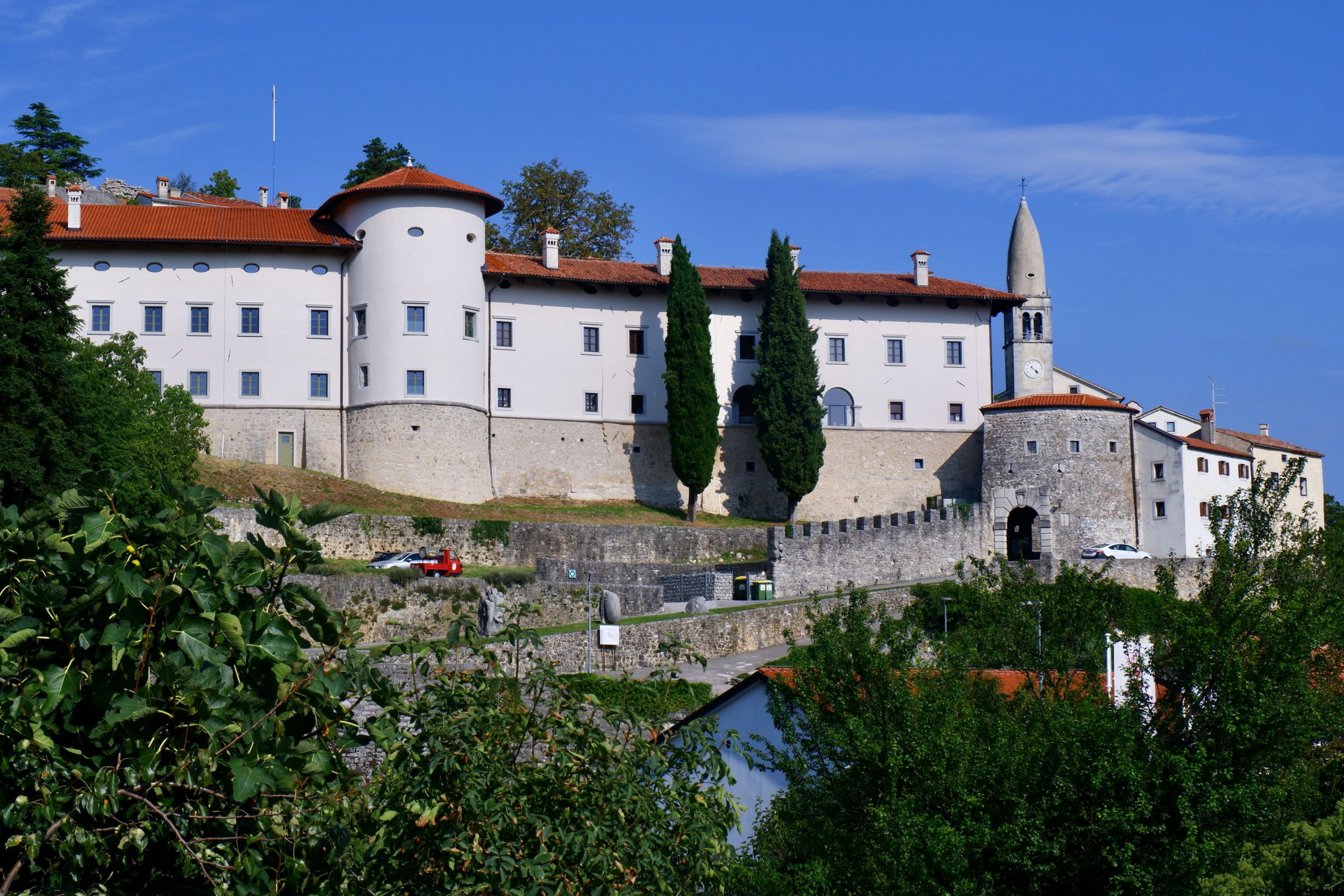 Fortress
Fortress
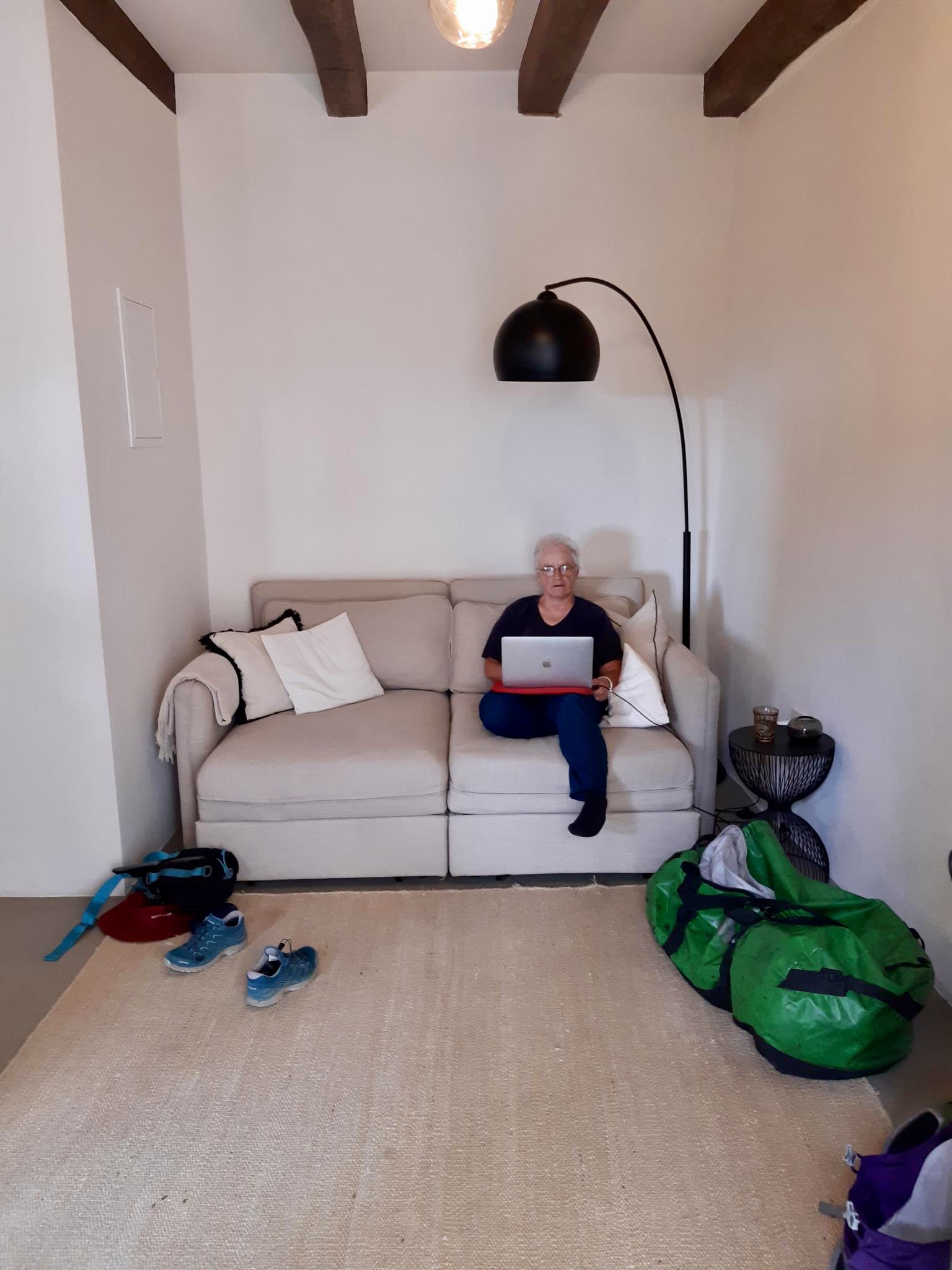 me in the room – a little shrunk
me in the room – a little shrunk
When we went back to the car to grab something, there was a man in the car next to us who gave us a bag full of pears. Then he stripped naked, cleaned himself, and left us bewildered.
In the evening, we walked through the small village. You have a beautiful view over all the surrounding hills, and it is very quiet. In some corners, it looked just like I had imagined Balkan-Mediterranean Slovenia. But that church steeple—it looked far too much like a bomb for my taste.
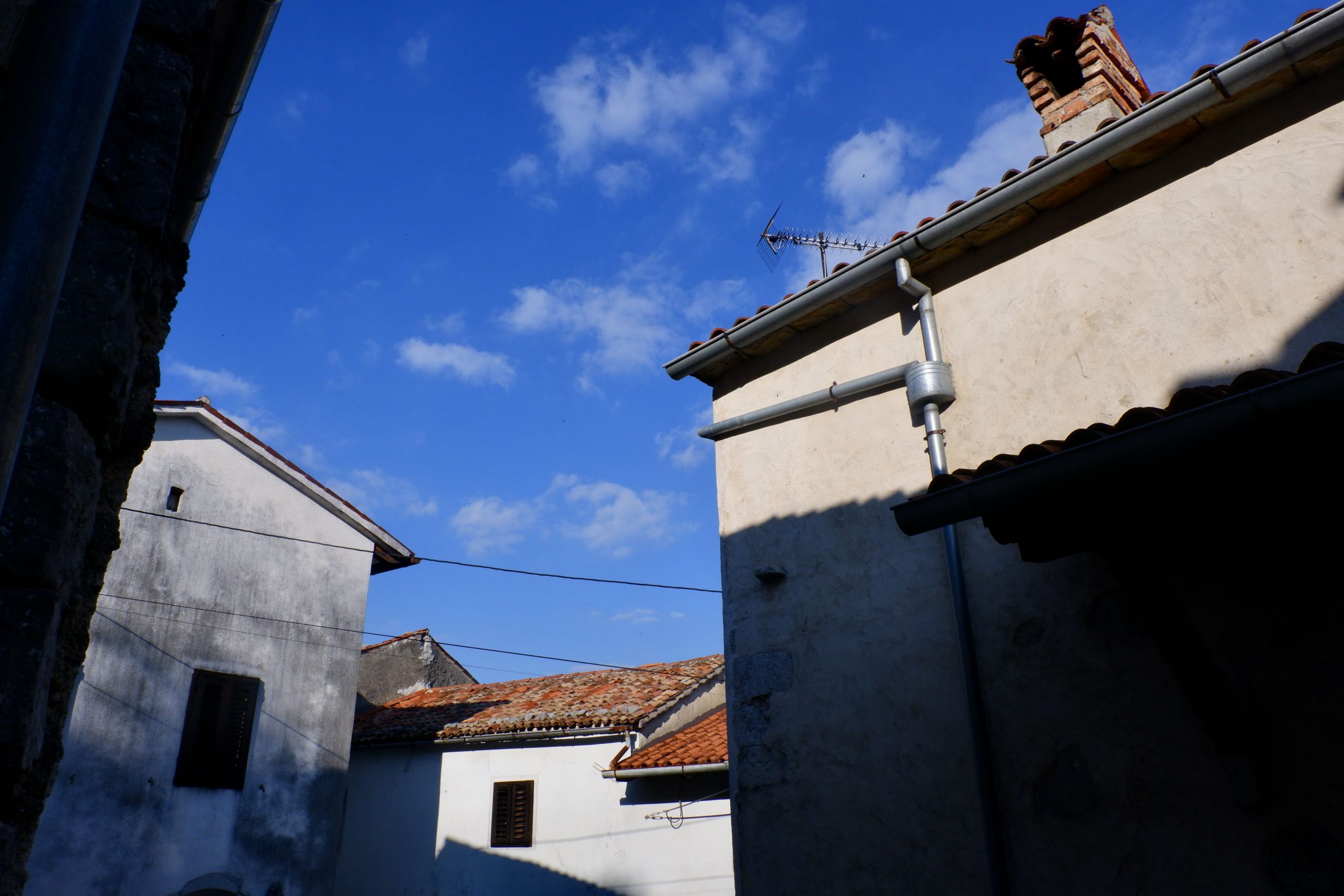 10
10
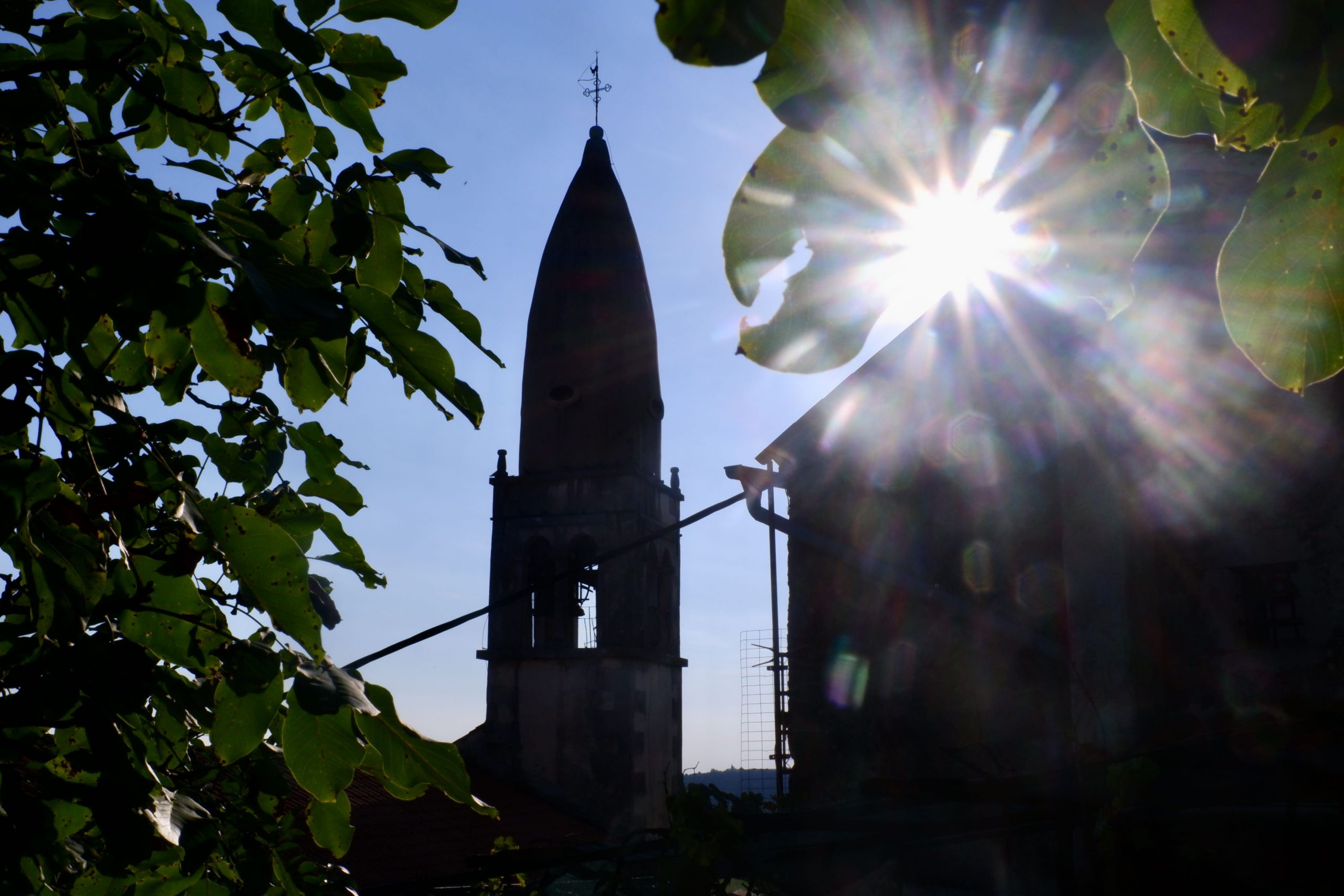 11
11
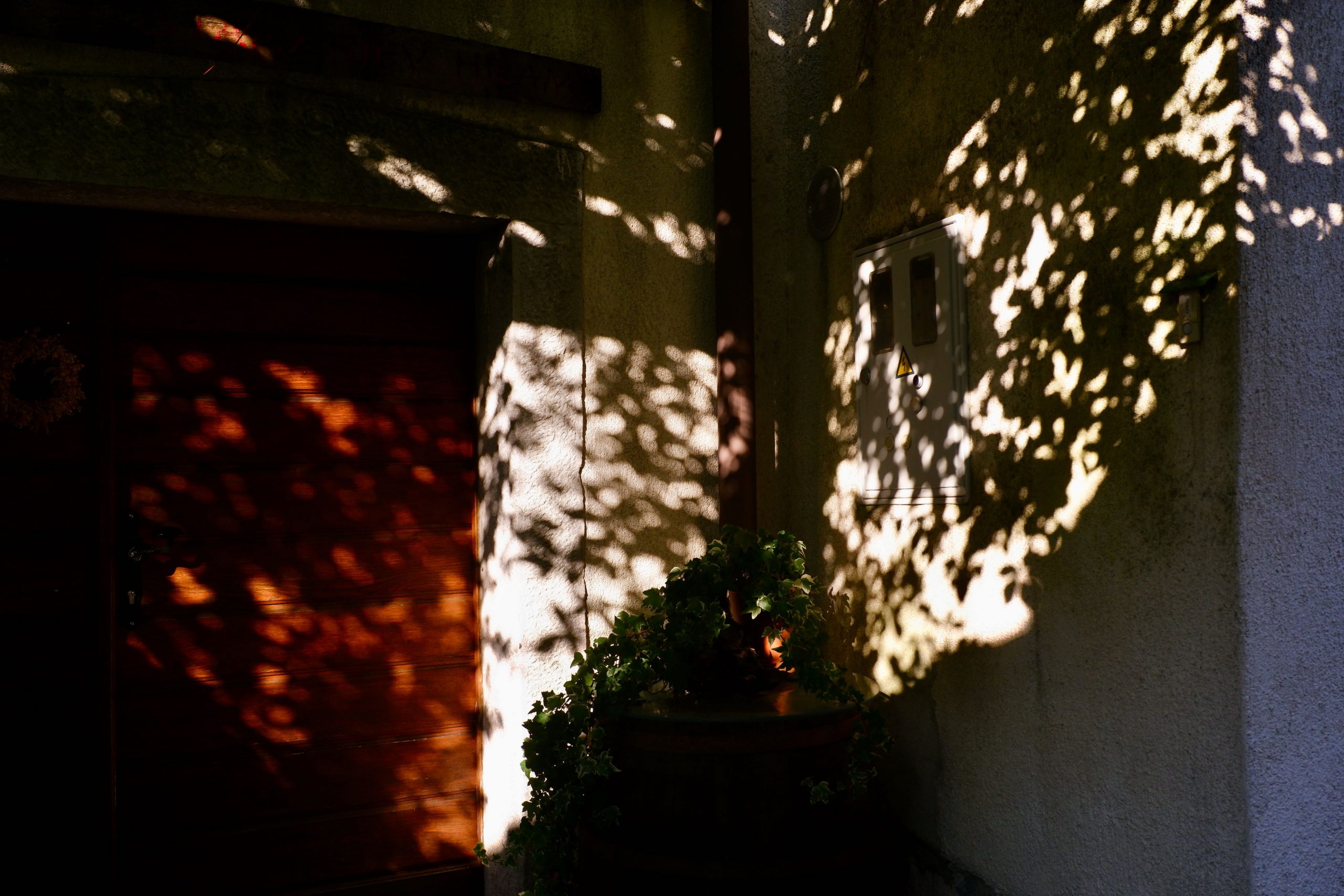 12
12
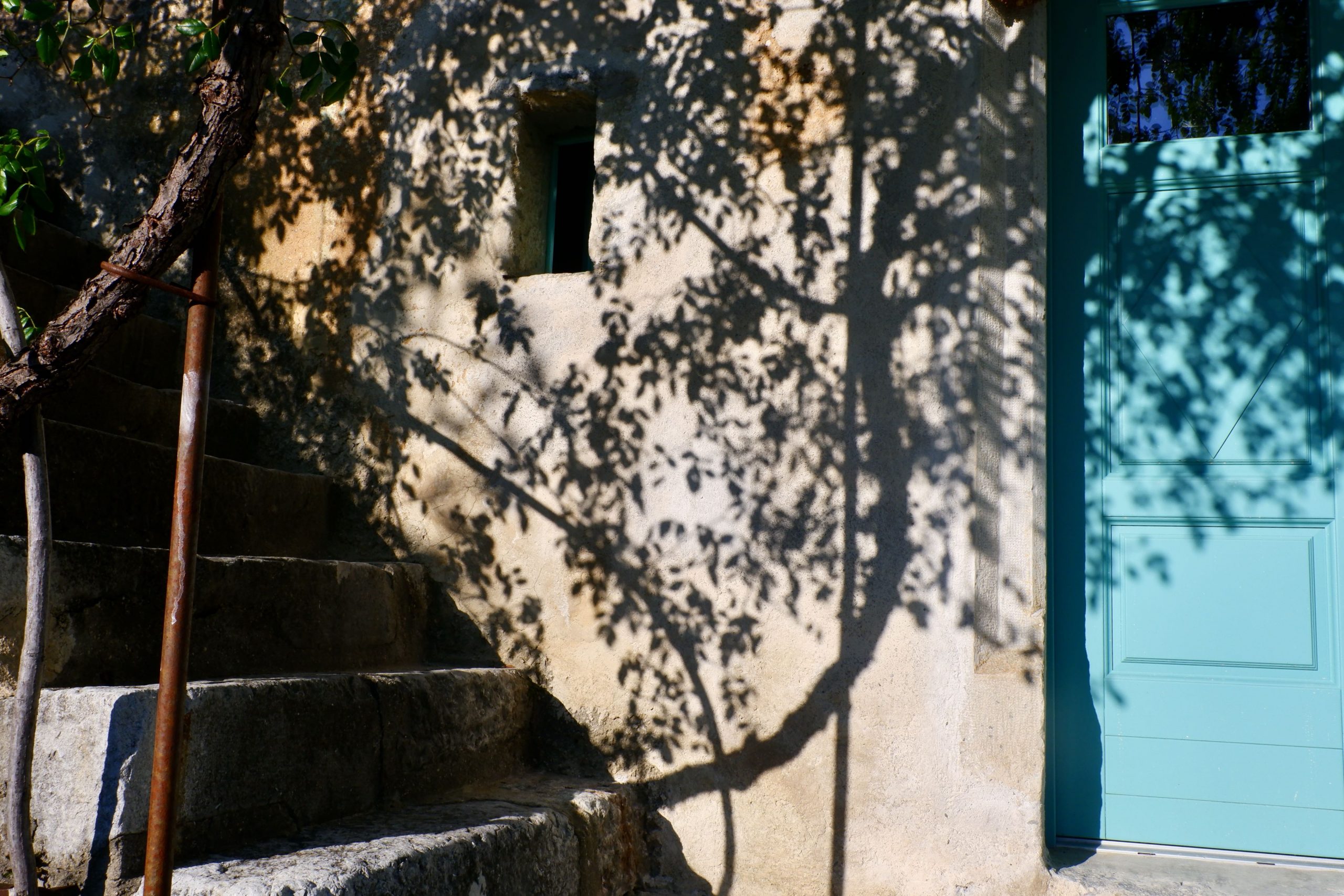 13
13
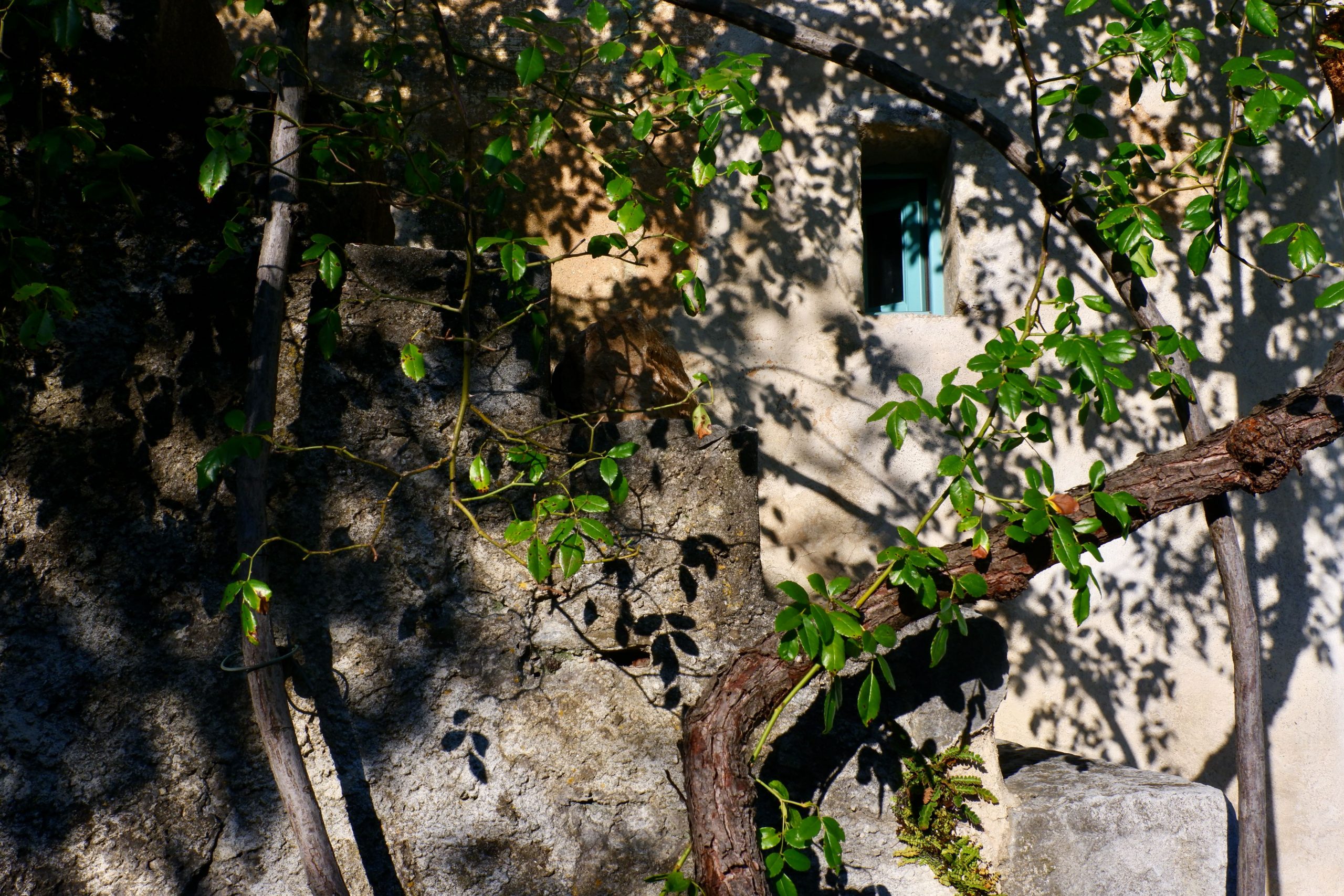 14
14
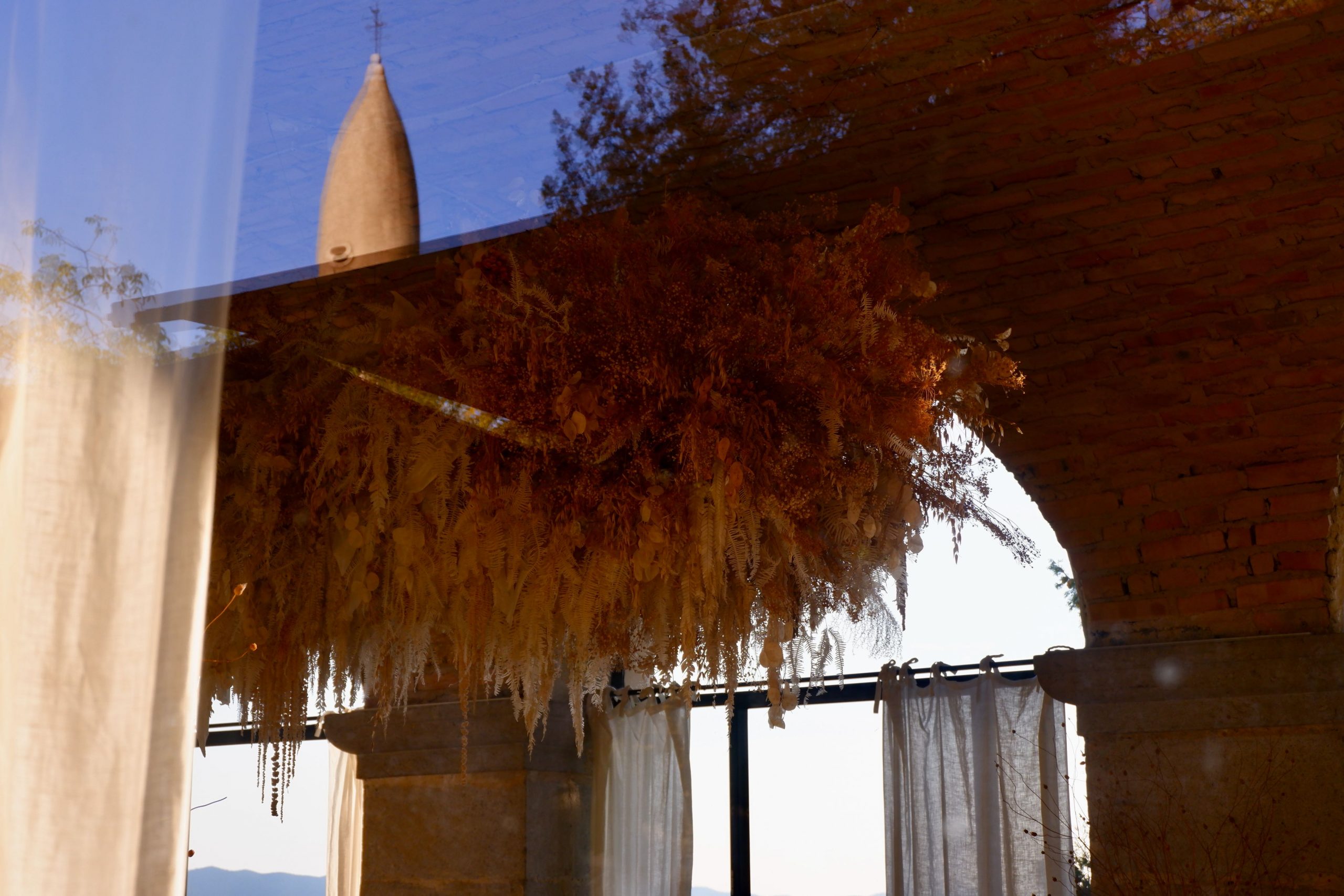 15
15
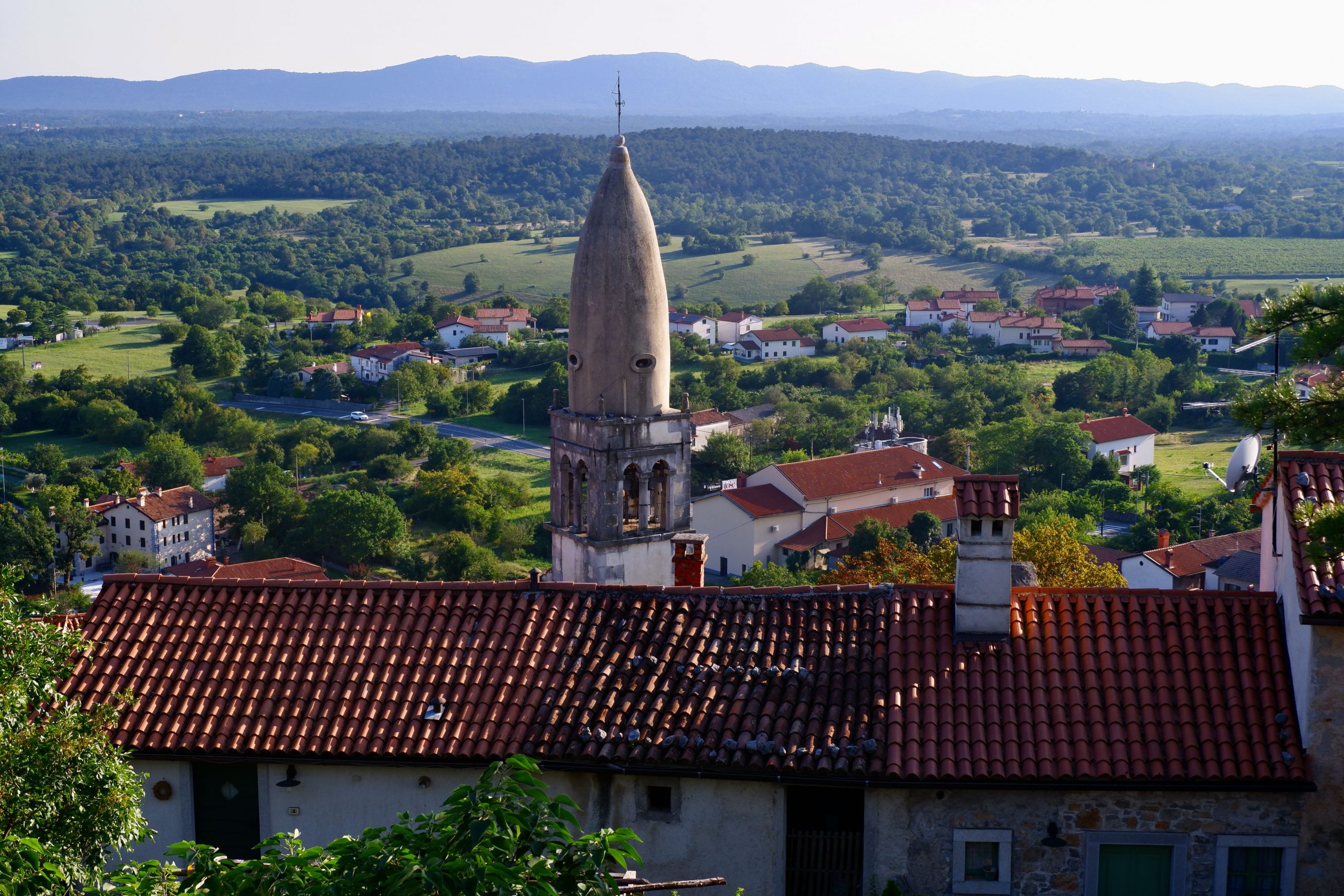 16
16
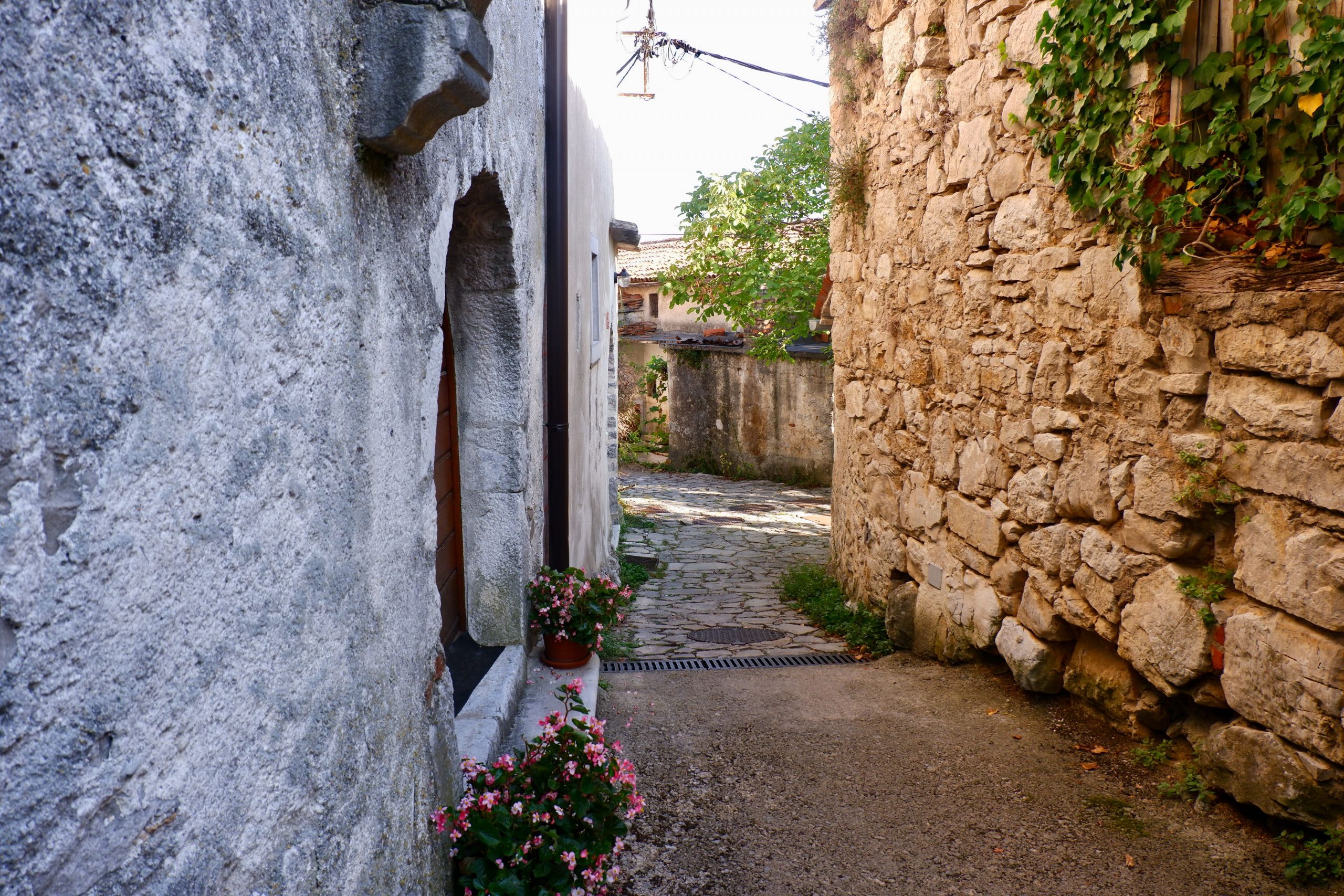 17
17
In any case, there is an effort to breathe more life into the village and to restore and preserve its past. Even with the day-trippers, it is still far from being like some of the hyped little mountain villages elsewhere, where there are too many souvenir shops, cafés, and other touristy bustle
In one garden, people seemed to enjoy gnomes and other knick-knacks. I found it somewhat original, though, that there was an Eve with a snake.
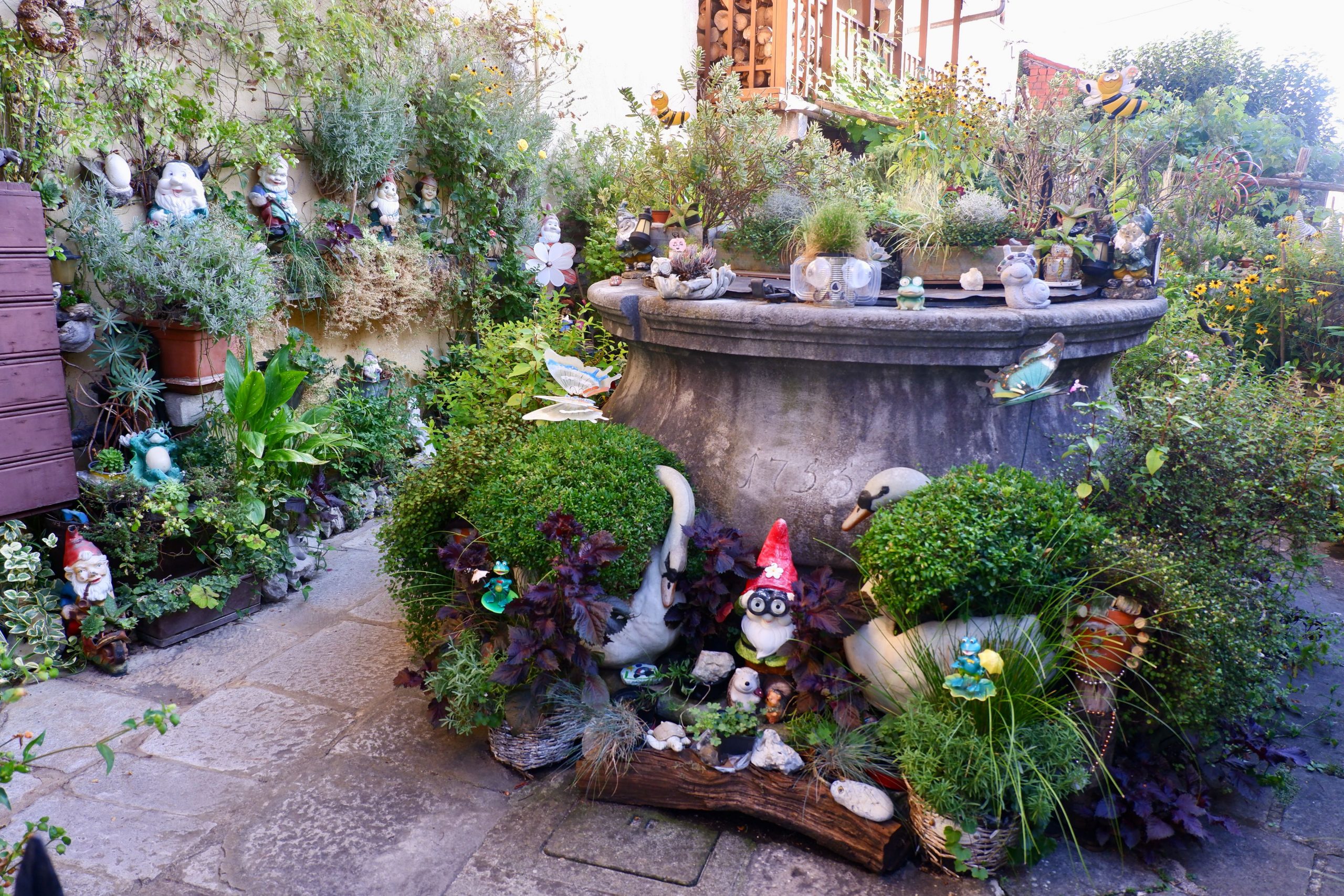 garden with something to watch
garden with something to watch
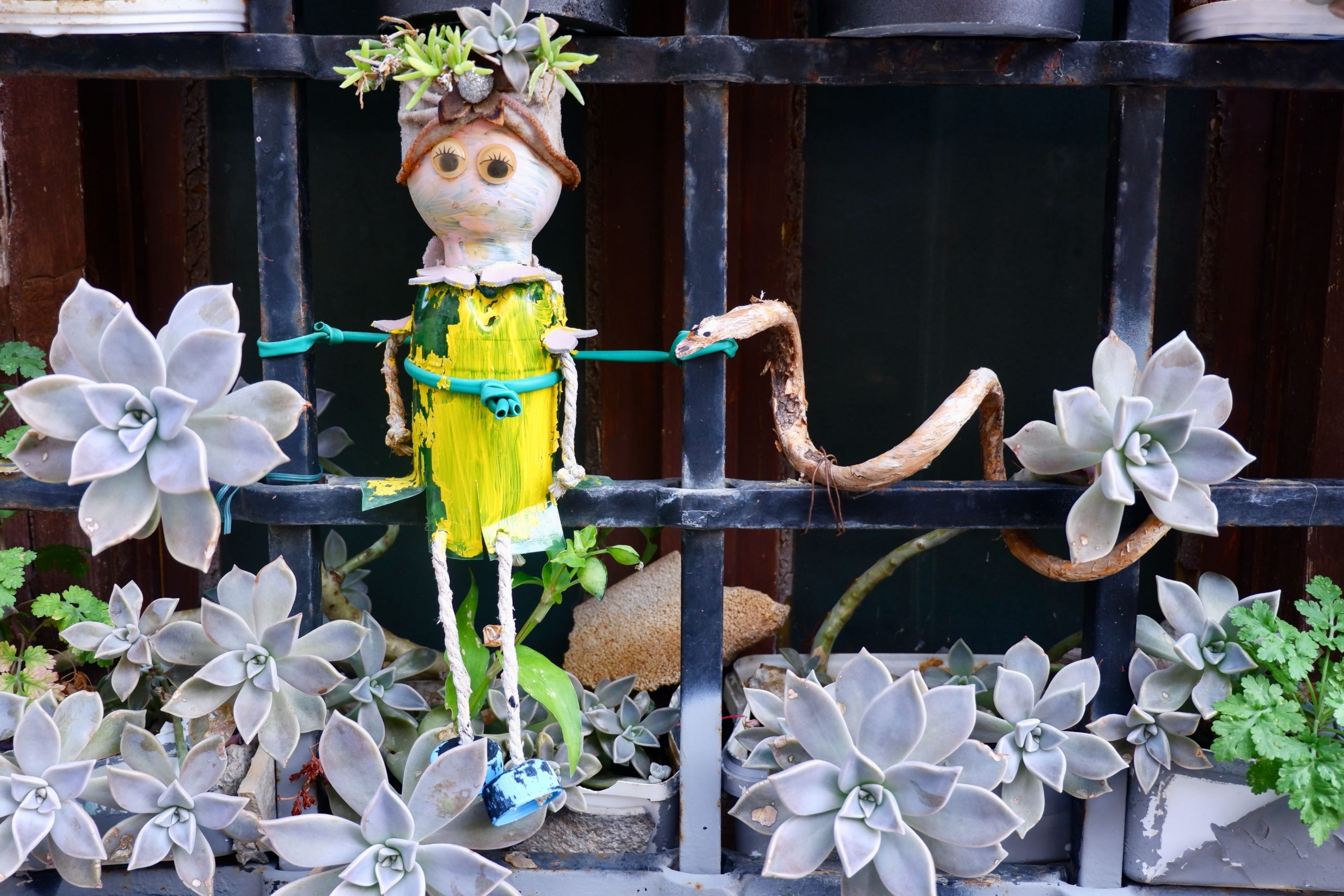 Before or after the apple
Before or after the apple
In any case, we had the impression that we had chosen our accommodation very well – it was sufficiently quiet, and once again we felt like we were getting a little more insight into (rural) life in Slovenia.
The next day, we went on an excursion that showed us a completely different side of Slovenia. Excited?
